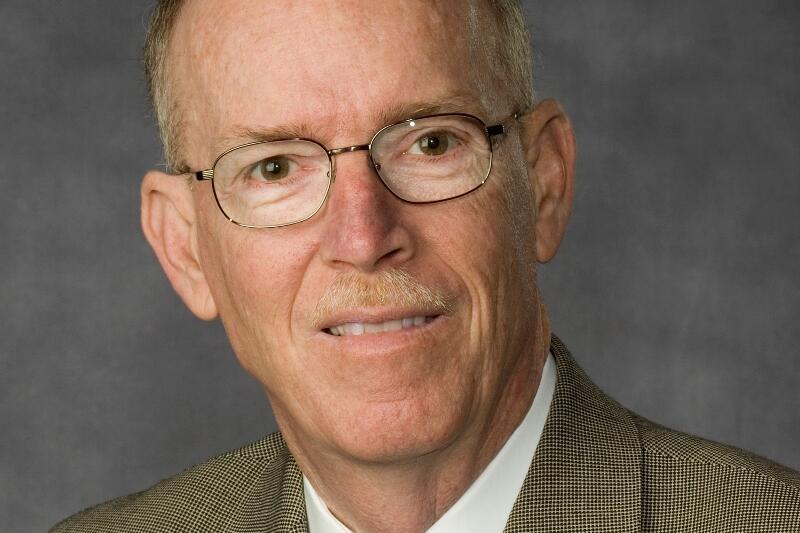
May 2, 2014
Ohlinger retires after overseeing university’s growth
Share this story
During his 17 years in facilities management at Virginia Commonwealth University, Brian Ohlinger oversaw 3 million square feet in new construction and renovation projects that helped expand and sustain VCU’s evolution into one of America’s premier urban public research universities.
Here is a partial recap of the $1.5 billion of work done on Ohlinger’s watch: The Siegel Center. Buildings for the schools of business, nursing, dentistry, arts, and engineering and the Center for Life Sciences. The Academic Learning Commons, which partly serves as a new home for the School of Social Work. Nine parking garages in a decade. Shafer Court Dining Center. Nearly 4,000 beds across multiple new and renovated residence halls. The VCU Brandcenter. A School of Medicine education building designed by I.M. Pei’s internationally acclaimed architectural firm, Pei Cobb Freed & Partners, and Ballinger. Sports Backers Stadium. A sports medicine building. The Cary Street Gym (and the awards and recognition it brought). A renovation of the Larrick Student Center.
Ohlinger, who is retiring as associate vice president in facilities management, declines to pick a favorite from the group.
“To pick one out, no, I don’t think I can,” Ohlinger said. “They were all fun. They had their own impact when they opened. Each building has its own unique challenge, but that’s part of the fun of the job.”
Before coming to VCU, Ohlinger enjoyed a 28-year career in the U.S. Army Corps of Engineers. That first experience as an urban planner prepared him “100 percent” for his work at VCU, he said. Learning how to manage contractors, understanding design and handling day-to-day operations helped Ohlinger transition out of the uniform and into civilian work. Everything he did for VCU as a civilian he had done as a colonel and member of the Corps.
Donna Thornburg, director of staff operations for facilities management, said Ohlinger approached each day at VCU with full effort. “The word ‘can’t’ is just not in his vocabulary when it comes to fulfilling the mission,” she said.
Ohlinger said that he had no idea when he first joined VCU that by 2014 the university would have grown as fast and large as it has. When he attended his first university Board of Visitors meeting, he said that if you can’t be happy managing large, complex projects — in this case referring to the Siegel Center in 1997 — then there was something wrong.
“It doesn’t get much better,” he said.
Working at VCU during an ambitious building period presented both enjoyment and obstacles for Ohlinger. On the one hand, funding and a need for growth at the university fueled exciting projects. On the other hand, Richmond’s urban environment presents limited space, which sometimes leads to bumped elbows.
When the Richmond Times-Dispatch ran a two-page layout on VCU’s expansion east before there was ever brick and mortar to the Cary and Belvidere residence hall, it was clear that some of Richmond’s residents were not thrilled for the university’s expansion.
“We don’t have the option of moving the project and going somewhere else,” Ohlinger said, noting VCU’s urban environment.
However, VCU's projects have allowed for major infrastructure growth, often while using vertical expansion to maximize sometimes limited space. These facilities helped sustain the growth of the university and created a greater sense of a campus.
Ohlinger cites top-level vision and support for the expansion era of the university.
“Without that vision, we wouldn’t have been able to do any of this. Our presidents and boards over the years have been very supportive of the facility improvements and changes,” he said.
Ohlinger also is quick to give credit to his staff, referring to himself as just the maestro of a great orchestra of talent.
VCU President Michael Rao, Ph.D., thanked Ohlinger for his contributions and commitment to the university.
“His legacy at VCU is indelible and permanent, and it is measured by much more than bricks and mortar,” Rao said. “Brian’s vision, leadership, wisdom and — above all — his commitment to excellence has forever elevated VCU and enabled our people to succeed at the highest levels.”
Looking forward, the physical growth of the university may slow down, but a focus on strategic improvements of certain facilities will help aid the university’s academic goals, Ohlinger said. While more facilities will be built to support the growth of the university, older buildings that support the academic infrastructure will need investment. The university’s master plan identifies what work will need to be done in the future, but doesn’t prioritize what work should be done first. This, along with funding issues, will be challenges for Ohlinger’s successor.
As for Ohlinger, his retirement sparks a new adventure. With a new Kia Soul as a ”dingy” to the back of an RV, Ohlinger plans to travel America and visit the sites he’s always wanted to see. His career in the Army Corps allowed him to spend 15 years traveling to places such as Greece, Paris, Cairo, London and the Middle East. But his own country’s sites are what Ohlinger hopes to explore.
While Ohlinger visits the many landmarks on his next adventure, VCU and the legacy he leaves behind for the university will be remembered through the landmarks he helped build.
Subscribe for free to the weekly VCU News email newsletter at http://newsletter.news.vcu.
Subscribe to VCU News
Subscribe to VCU News at newsletter.vcu.edu and receive a selection of stories, videos, photos, news clips and event listings in your inbox.







